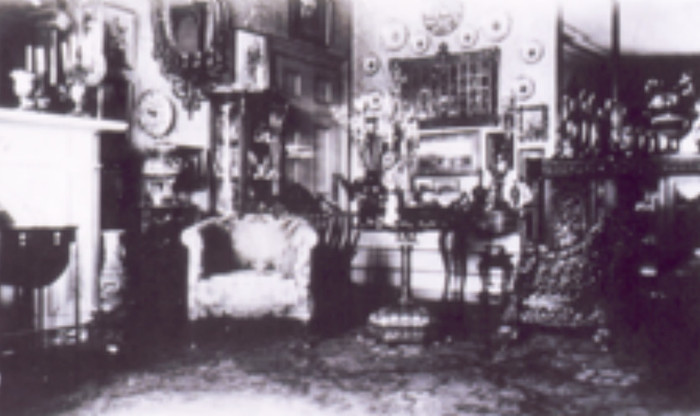This article by Stephen Gilburt was first published by The Enfield Society in newsletter 183, Autumn 2011.
The Elizabethan Bowling Green House was purchased in 1724 by Michael Garnault. The house eventually passed to Anne Garnault (1771-1812) who in 1799 married the print seller and publisher, Henry Carrington Bowles (1763-1830). He had Myddelton House built of yellow Suffolk brick in 1818 to a design by George Ferry and John Wallen, and the adjoining Bowling Green House was then demolished. The house, which together with the gardens is listed Grade II, commemorates Sir Hugh Myddelton, who was responsible for the construction of the New River between 1609 and 1613.
The house passed via Bowles’ son, also Henry Carrington Bowles (1801-1852) to his nephew Henry Carrington Bowles Treacher (1830-1918), who changed his surname to Bowles. Col. Sir Henry Ferryman Bowles (1858-1943), second son of H.C.B. Bowles, lived at Forty Hall from 1895 (see newsletter 173, Spring 2009, page 4) and was Conservative MP for Enfield for 1899-1906 and 1918-1922. Edward Augustus “Gussie” Bowles (1865-1954), fourth son of H.C.B. Bowles, began to develop the gardens from about 1890 and they became internationally famous for their many rare and unusual plants. E.A. Bowles was the author of a series of books about his remarkable gardens. The connection with the Bowles family is still maintained today, and Brigadier Andrew Parker Bowles OBE (great-great nephew of E.A. Bowles) is the current president of the E.A. Bowles of Myddelton House Society.
In 1954 the London School of Pharmacy bought Myddelton House, which it shared with the then Royal Free Medical School. The kitchen garden was used as a pharmacognosy garden. Myddelton House is now the headquarters of the Lee Valley Regional Park Authority, to which it was sold in 1968. Sections of the gardens have recently been restored, funded by a Heritage Lottery Fund grant. They are open daily, free of charge, May to September, 9.30 am to 6.30 pm and October to April 9.30 am to 4.30 pm.
There is a new Visitor Centre, with tea room and heritage exhibition telling the compelling story of E.A. Bowles, in the 19th century stable block. (See newsletter 182 Summer 2011, page 2). “The crocus king: E.A. Bowles of Myddelton House”, by Bryan Hewitt (Rockingham Press 1997, ISBN 1-873468-47-4: £6.95 paperback) is available in the Visitor Centre. There is also an excellent audio guide and guided tours of the gardens are available for groups by arrangement. For more information telephone 08456 770 600 or visit leevalleypark.org.uk. Myddelton House has a car park for visitors and may be reached by train to Turkey Street station or by buses 217 and 317 along the A10 to Turkey Street, 5 minutes walk from the house.
















